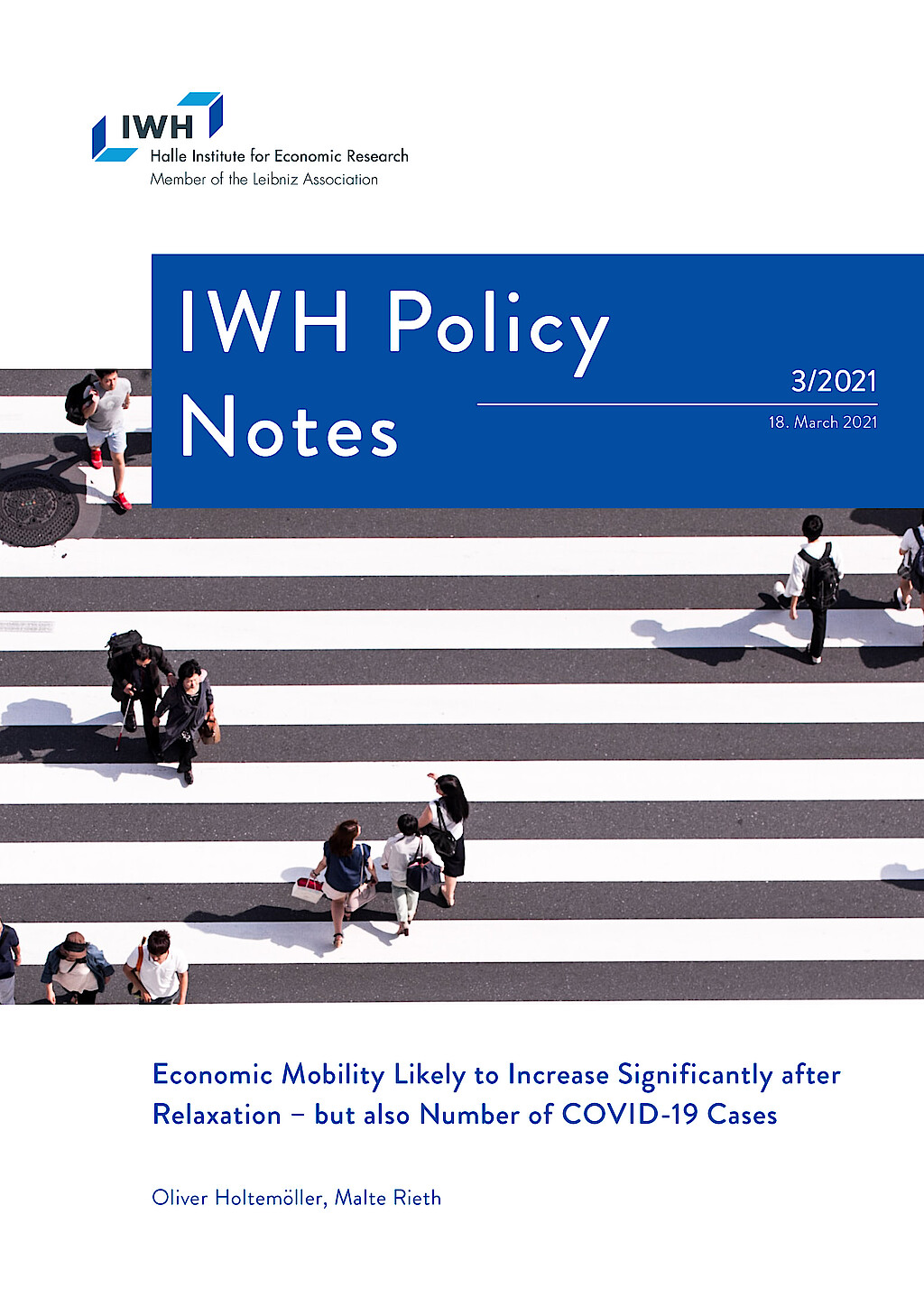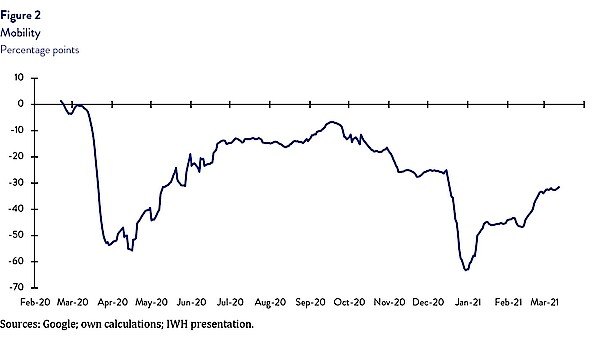
Economic Mobility Likely to Increase Significantly after Relaxation – but also Number of COVID-19 Cases
In Deutschland wurden Anfang März in einigen Bereichen Maßnahmen zur Eindämmung des Coronavirus gelockert; so wurde die Anzahl der Personen aus verschiedenen Haushalten, die sich treffen dürfen, vielerorts erhöht und Einzelhandelsgeschäfte können vermehrt wieder Kunden empfangen. Auf diese Weise kommt es zu einem gewollten Wiederanstieg der wirtschaftlichen Mobilität und der persönlichen Kontakte zwischen Menschen. Die Kontakthäufigkeit ist allerdings auch ein wesentlicher Einflussfaktor für die Ausbreitungsgeschwindigkeit des Coronavirus, zumal die Lockerungen bislang nicht mit einer systematischen Teststrategie einhergehen; und auch der Impffortschritt bleibt hinter den Erwartungen zurück. Schätzungen auf Basis eines Modells für den Zusammenhang zwischen Eindämmungsmaßnahmen (Oxford COVID-19 Government Response Tracker, Stringency Index), wirtschaftlicher Mobilität (Google Mobility Data), Corona-Neuinfektionen und Todesfällen mit Daten aus 44 Ländern deuten darauf hin, dass die jüngsten Lockerungen die wirtschaftliche Mobilität um mehr als zehn Prozentpunkte ansteigen lassen und die Zahl der Neuinfektionen und der Todesfälle in Deutschland um 25% erhöhen. Da sowohl ein fortgesetzter Lockdown als auch Lockerungen erhebliche negative Konsequenzen mit sich bringen, ist es umso wichtiger, durch eine bessere Test- und Quarantänestrategie und durch eine höhere Geschwindigkeit beim Impfen weitere Lockerungen zu ermöglichen, ohne damit die Gesundheit der Menschen zu gefährden.
18. March 2021
Contents
Page 1
IntroductionPage 2
Relaxations and increasing corona casesPage 3
Economic policy implicationsPage 4
Endnotes All on one pageIntroduction
To contain the spread of coronavirus, many countries have implemented restrictions on mobility and public life. Examples of such measures include school and business closures, cancellation of major events, restrictions on freedom of assembly, closure of public transport, curfews, and restrictions on national and international travel. The overall intensity of these measures, as measured by the Oxford COVID-19 Government Response Tracker (Stringency Index), rose to a high level in Germany in the wake of the first wave of infection in spring 2020 (see figure 1). In the summer of 2020, some measures were withdrawn or relaxed. Since mid-October 2020, measures have been tightened again: Restaurants were closed in November; large parts of the retail sector and general education schools in mid-December. Mobility, which is also important for many economic activities, reflects the level of containment measures (see figure 2).

Empirical evidence demonstrates that, on the one hand, public life restrictions are likely to mitigate the number of new corona infections; however, ever further containment measures tend to have smaller and smaller effects on the number of new infections (Bendavid et al. 2021)1 and on the number of deaths. On the other hand, containment measures affect economic activity; the longer containment measures last and the more intensive they are, the higher the direct economic costs of containment policies. For example, lost sales can lead to corporate bankruptcies (Holtemöller and Muradoglu 2020)2. Thus, there is a certain trade-off between reducing deaths and serious disease progression and avoiding economic losses.3 However, this does not mean that it is not optimal from an economic perspective in the medium to long term to accept some level of income loss associated with containment measures (Holtemöller 2020)4. But it does mean that the various effects must be weighed against each other when deciding whether to take or withdraw containment measures.






